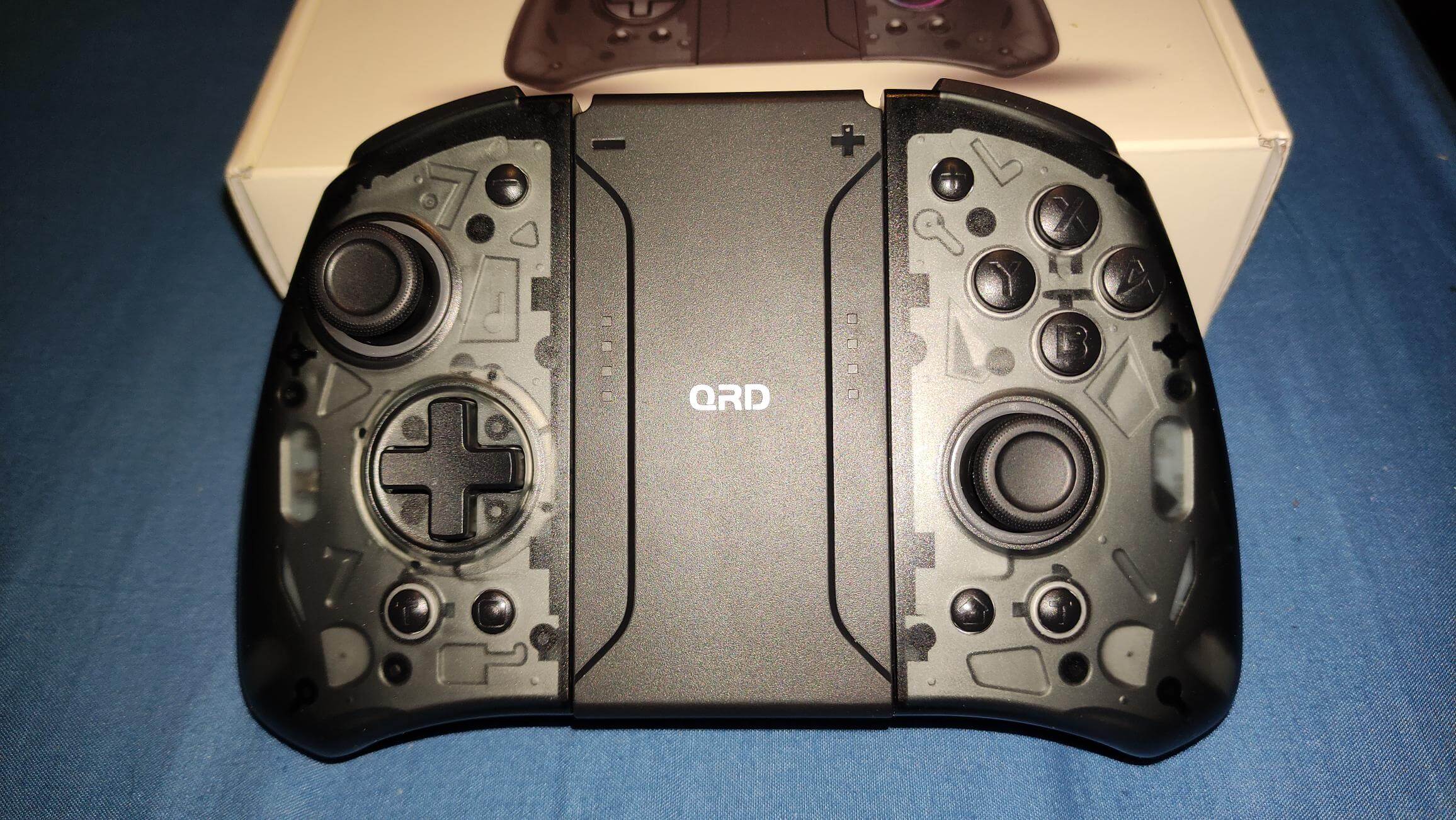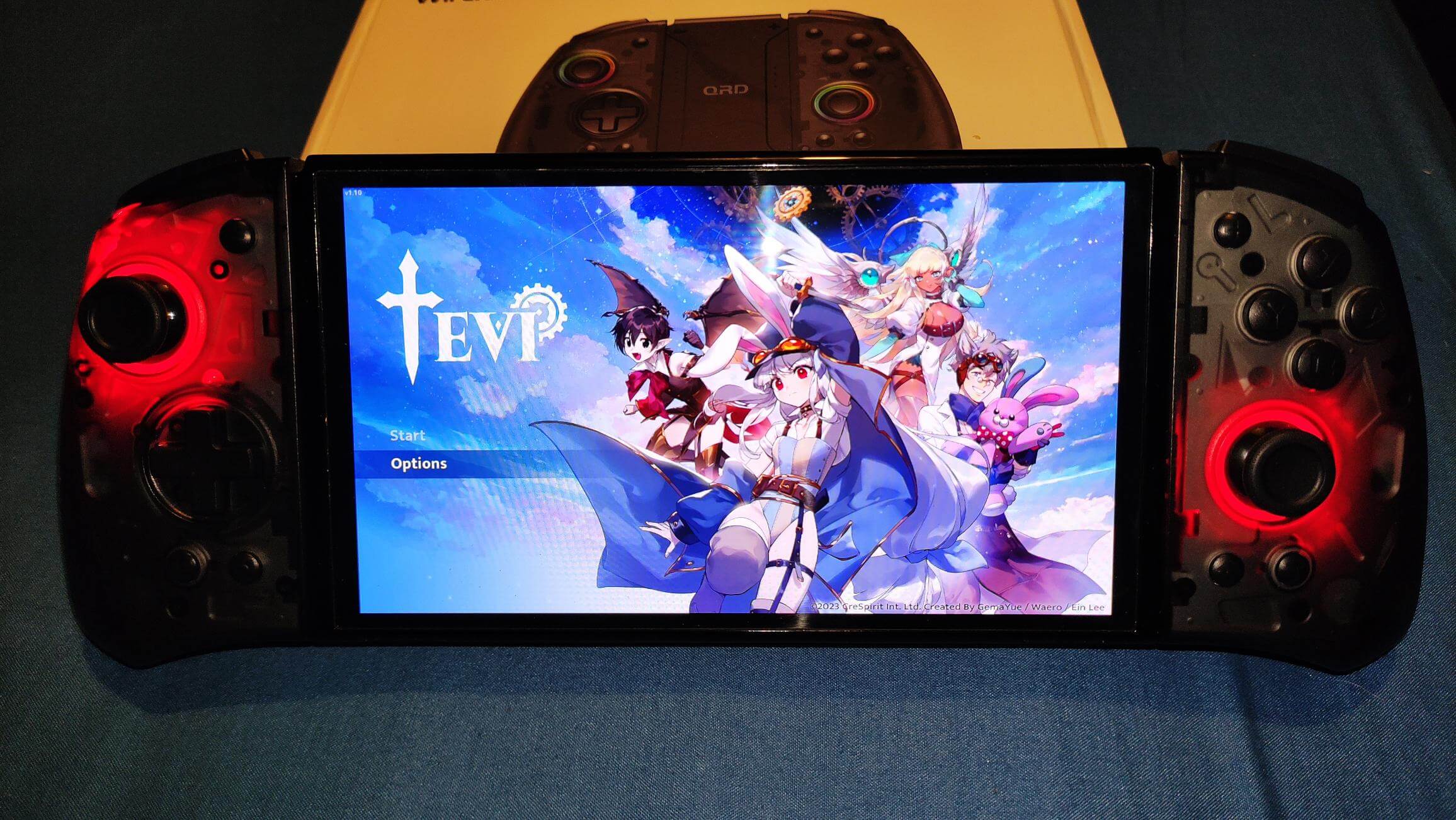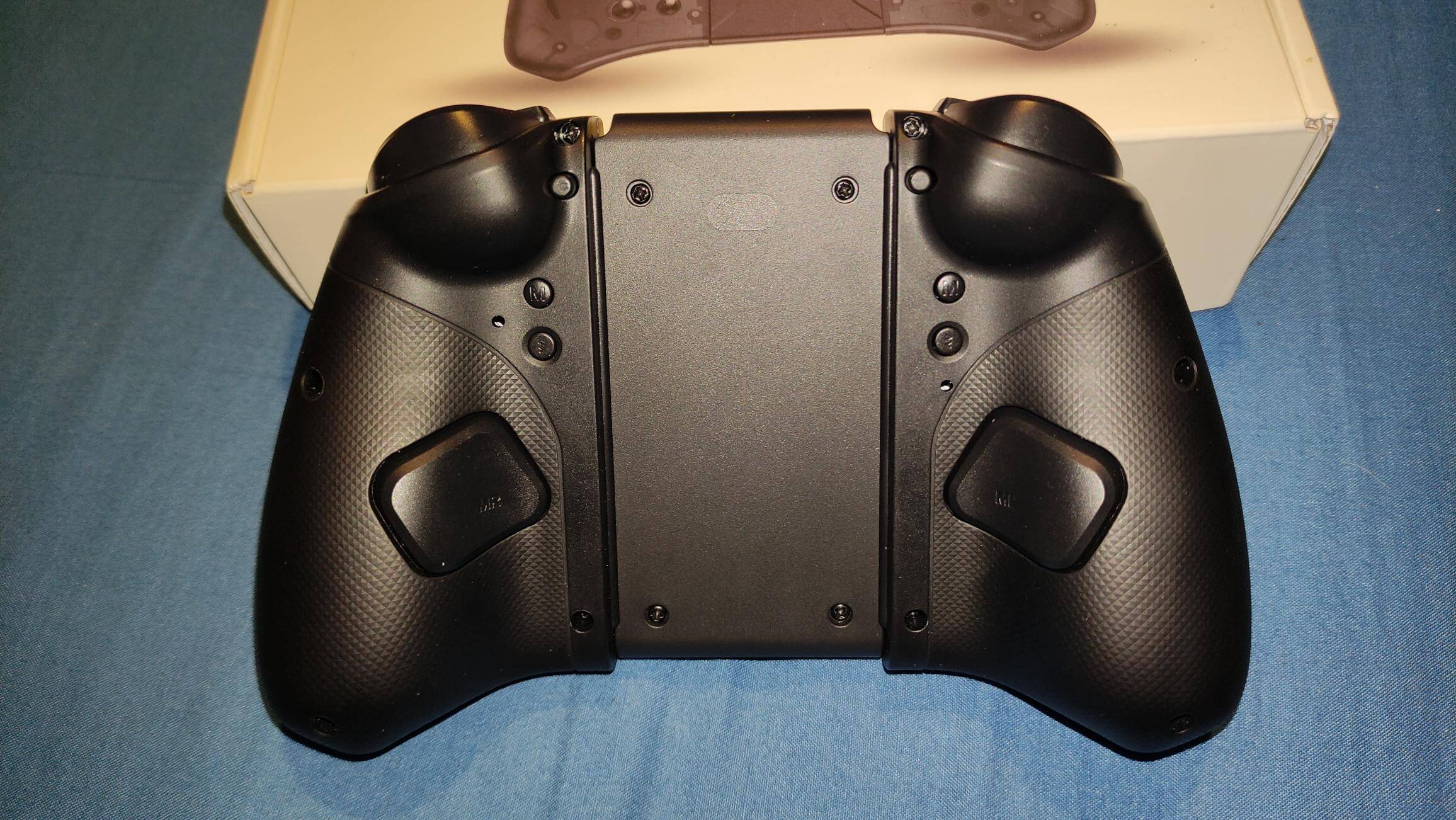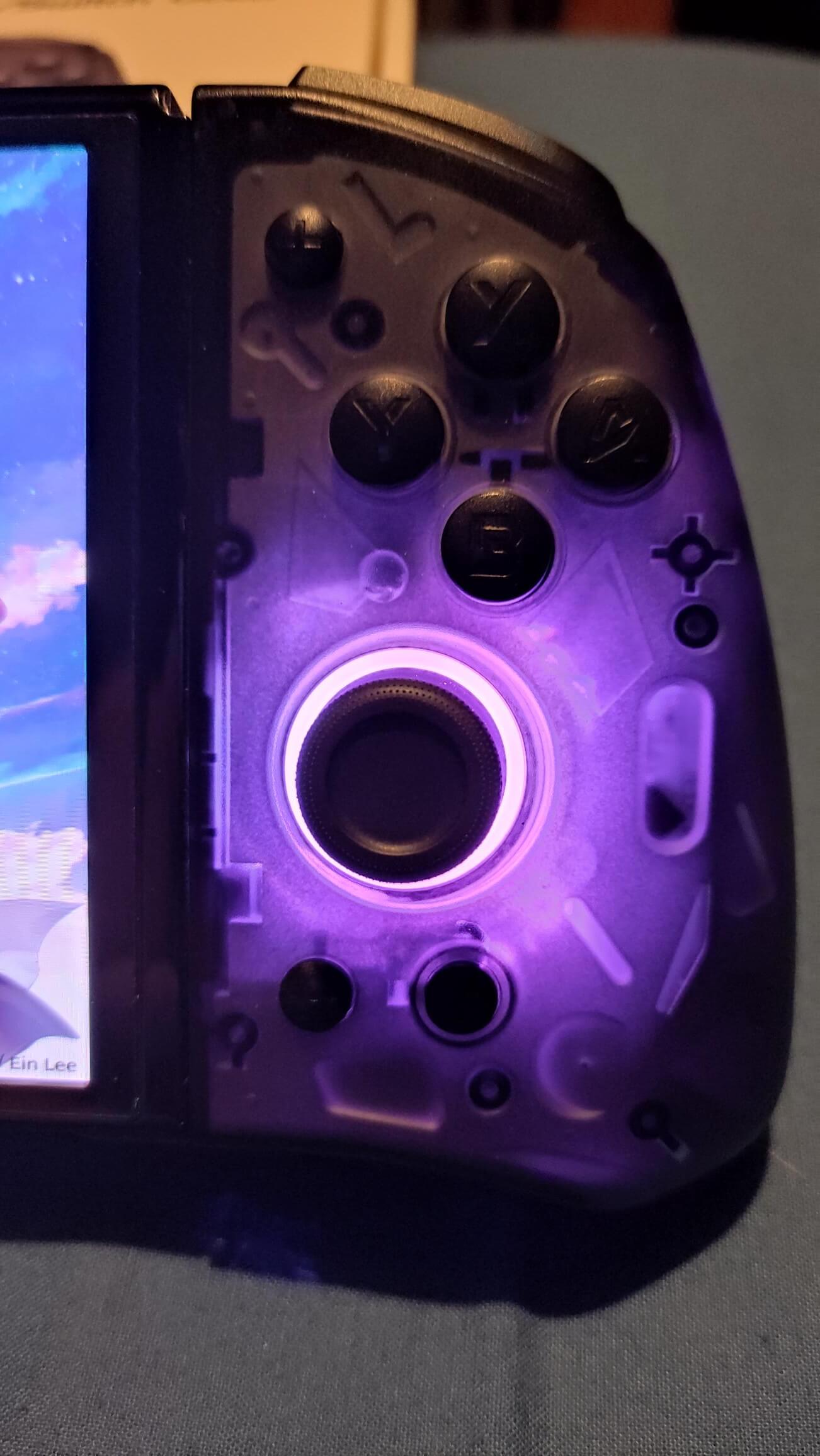QRD Stellar T5 review — a better handheld experience
The Nintendo Switch has nearly reached its seventh birthday, and a lot has happened during that time. Naturally, a lot of accessories and controllers have also been released during this time.
The QRD Stellar T5 is a new entry into this large collection, attempting to offer a better handheld experience over the stock joy-cons. But does it succeed?

What’s in the box
Out of the box, you get the QRD Stellar T5 itself (complete with a plastic holder that you can attach each part of the controller to), a replacement d-pad, and a short USB C charging cable.
The controller itself is split similar to joy-cons and, unlike similar larger joy-con replacements, can actually be used when disconnected from the Switch. This also means that it’s possible to use the Stellar T5 on PC and mobile devices, either separately or using the aforementioned plastic holder.
You also get nearly every feature available to stock joy-cons. This includes vibration (not HD rumble, though this didn’t bother me personally), gyro support, and the small SL/SR buttons found on the side when each part of the controller is disconnected. The only thing that’s missing is NFC support, meaning that you’d still need an official Nintendo controller to read data from Amiibos.

Controller and button feel
From the get go, it’s easy to tell just how much better the QRD Stellar T5 is to hold over standard joy-cons. You have properly moulded handles, with full sized buttons and analog sticks. They do make for a wider setup than the joy-cons, but it never feels uncomfortable — if you play with the Switch on the lap, you won’t even notice the change at all.
Helping the improved ergonomics is the material used on the back, improving grip without feeling overly sticky. Compared to the Hori Split Pad Pro, which was my previous choice for the Switch, it just feels much nicer to hold. It doesn’t feel much heavier either, despite the inclusion of rumble and gyro controls.
Most of my impressions are with the controller docked to a Switch OLED, but I did give it a quick try separately as well. Despite the larger size, each part of the controller feels good in the hands. You can technically use them as two separate controllers like with joy-cons too, though this is far from comfortable and definitely not the intended use.

Following the improvements over the Split Pad Pro, the buttons used in the QRD Stellar T5 are just pleasant to use. It’s the first time I’ve tried a console controller featuring buttons that use mechanical switches, but now I want more controllers to follow this.
They feel nice and clicky, making it easy to tell when you’ve actually pressed one (over the Split Pad Pro which had rather stiff and unresponsive buttons). Even the shoulder buttons use mechanical switches, which can take a little getting used to — the L and R buttons take very little force to press down compared to joy-cons.
ZL and ZR also have very little travel (albeit more than the L/R buttons). It’s something to keep in mind, especially if you’re more used to the longer triggers of Xbox and PlayStation controllers. As this is a primarily a Switch controller, you also won’t have access to analogue triggers when playing games on PC or mobile.
As with many third-party controllers, the QRD Stellar T5 has access to macro and turbo functions. While these aren’t features I’m really interested in, macros are needed when setting up the back button on each part of the controller. I find the back buttons are best mapped to clicking in the left or right analog sticks, letting you still use the sticks while accessing those functions.
Each analog stick doesn’t feel too different from what I’m used to on other controllers, getting the job done without much flair. Their shape is definitely better than stock joy-cons when it comes to stopping your thumbs from slipping off. Their main advantage is the use of hall effect tech, which in theory should remove the chance of analog drift after a few months of use.
The only part of the controller I’m not the biggest fan of is the d-pad. It’s not terrible, and still an improvement over the lack of any d-pad on joy-cons. But it can feel a little stiff compared to the face and shoulder buttons. Perfectly fine for menus and occasional use, but it didn’t feel like the best option for platformers like Super Mario Bros. Wonder.
Appearance and lighting options

The QRD Stellar T5 offers a fully black visual style, with the main shell being translucent. It’s an interesting style, though the transparency doesn’t actually give you a view of the internals — there’s another layer below the main shell that blocks your view to the motherboard and other parts.
It looks quite nice against the black of the Switch console itself, and not too in your face. What could be considered flashy is instead the RGB lighting, which defaults to a red ring around each analog stick. You have a few options for colours, including the option to cycle between each colour setting or just turn it off entirely.
Lighting being regulated to just the analog sticks doesn’t seem like a lot, but the transparent shell ends up spreading out some of the colour. It’s not a bad effect, especially in the dark where the lighting becomes even more obvious.
Unfortunately, there seems to be an issue with actually saving your lighting settings. I wanted to default to using white lights, while turning the lighting off entirely while playing during the evenings. However, regardless of the choices I made, these would often reset the next time I turned the Switch on.
QRD Stellar T3 vs T5
Despite its name, the QRD Stellar T5 is actually only the second controller in the Stellar lineup, following the Stellar T3. When it comes to differences, they’re seemingly just cosmetic. Compared to the Stellar T5, the T3 has a plain black shell. It also features extra lighting around all of the face buttons, and on each side of the controller.
Everything else is the same (including the price), so it all comes down to which you prefer the appearance of.
QRD Stellar T5 Review | Final Thoughts
The QRD Stellar T5 is an impressive controller that easily replaces the HORI Split Pad Pro as my Switch controller of choice. Its responsive buttons and overall improved ergonomics remove the hand cramps that come from longer gaming sessions with joy-cons. It also doesn’t feel like I’m having to sacrifice anything in return, unlike the Split Pad Pro’s lack of rumble and gyro.
The QRD Stellar T5 was reviewed using a unit provided by QRD. You can buy the Stellar T5 and T3 via QRD’s official website, with the code WRD10 taking 10% off the total price.
Join The Discussion
Rice Digital Discord
Rice Digital Twitter
Rice Digital Facebook
Or write us a letter for the Rice Digital Friday Letters Page by clicking here!
Disclosure: Some links in this article may be affiliate links, which means we may earn a small commission if you make a purchase after clicking on them. This is at no additional cost to you and helps support Rice Digital!
- Class of Heroes: Anniversary Edition Beginner’s Guide - April 25, 2024
- Farming sim SunnySide gets updated demo ahead of launch - April 24, 2024
- Metaphor: ReFantazio releasing October 2024, new gameplay revealed - April 24, 2024



